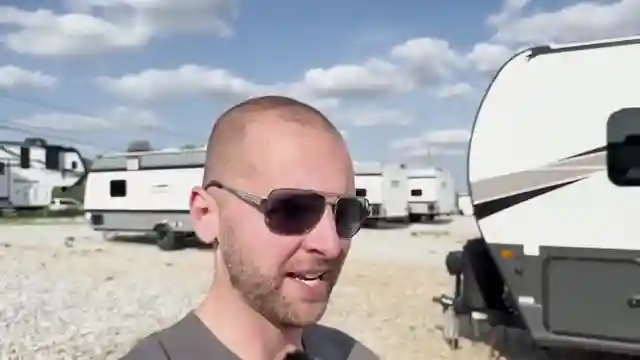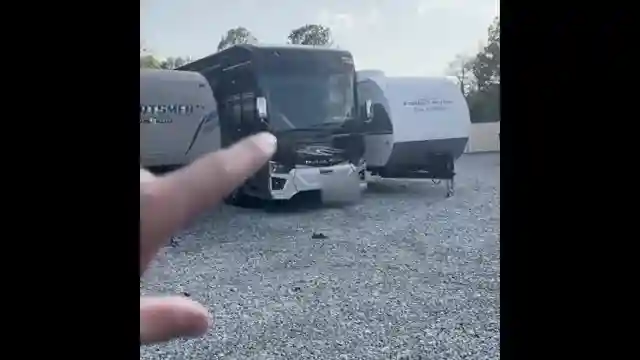RV Market Crash: Economic Impact and Future Growth Prospects

- Authors
- Published on
- Published on
In a shocking turn of events, the RV market in the United States has taken a nosedive, reminiscent of the infamous 2008 financial crisis. Prices have plummeted by a staggering 25%, with sales cut in half, leaving RV owners stranded. This downturn serves as a grim indicator of the underlying recession gripping the US economy. The once-thriving market, with 11 million American households owning an RV, saw a surge during the pandemic only to crash by 50% thereafter.
The pandemic-induced lockdowns and shift to remote work led to a surge in RV purchases, ranging from $25,000 to a hefty $100,000 for high-end models like fifth wheels. Financing these behemoths with debt is common practice, with monthly payments ranging from $400 to $2,000, influenced by an 8% interest rate contributing to the sales slump. The industry giant, Winnebago Industries, witnessed a staggering 52% stock price drop, mirroring the broader challenges faced by RV manufacturers.
Moreover, the downturn in the RV market mirrors the struggles seen in the housing sector and sport utility vehicle industry, with Polaris experiencing a 60% stock price decline. The economic landscape post-pandemic is unforgiving, with discretionary purchases taking a hit as individuals grapple with financial constraints. The demographic shift favoring RV ownership hints at potential growth post-correction, aligning with the broader economic slowdown. The RV market's tumultuous journey serves as a stark reminder of the economic challenges looming large across various sectors, signaling a bumpy road ahead for the US economy.

Image copyright Youtube

Image copyright Youtube

Image copyright Youtube

Image copyright Youtube
Watch RV market in complete freefall (Winnebago releases recession warning) on Youtube
Viewer Reactions for RV market in complete freefall (Winnebago releases recession warning)
RV market is a leading indicator for the US economy and has been in recession the last two years
Sales are down 50% and used prices are down 25%
Winnebago, the biggest RV manufacturer, has seen its stock price decline by almost 60% in the last two years
RVs are still expensive, with towables costing up to $100,000 and motorized ones costing $150,000
Favorable demographic shifts may lead to more RV buyers in the future
Some people find living in an RV to be a viable and cost-effective option
RV dealers may not stand behind their products, leading to buyer's remorse
RVs require constant upkeep and may not last long, especially if financed over 10 years
The price of pickup trucks needed to tow RVs has gone up significantly
RVs are like boats in that there is always something that needs to be fixed, leading to constant upkeep and maintenance costs.
Related Articles

Florida Housing Market Crisis: Prices Plummet, Migration Declines
Reventure Consulting explores Florida's housing market crisis: prices drop 3.5-6%, migration down 80%, 182,000 homes for sale, forecasted 5.5% decline.

RV Market Crash: Economic Impact and Future Growth Prospects
The RV market in the US faces a significant downturn, with prices dropping by 25% and sales decreasing by half. This crash reflects broader economic challenges, impacting industries like housing and sport utility vehicles. Demographic shifts may drive future growth post-correction.

2025 US Housing Recession: State-by-State Analysis & Forecasts
Reventure Consulting reveals the 2025 US housing recession, with over half of states experiencing declines. High prices and low buyer demand drive the market correction, impacting various regions. Explore detailed forecasts on Reventure's app for valuable insights.

US Housing Market Shift: Declining Rents Impact Home Prices
Reventure Consulting's report reveals a significant decline in US rents, impacting home prices. Austin sees a 10% drop, signaling a shift in the real estate landscape. Investor activity and overvaluation rates are key factors to watch in navigating the evolving housing market.
